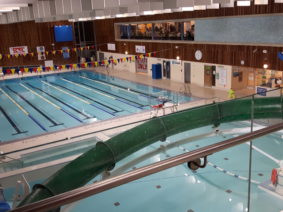Top mistakes people make when selecting a luminaire
No Light Level Requirements Defined;
Buying a light with no idea of what light level it needs to achieve can lead to disappointment, expense and liability. Every environment has a classification set by recognized standards based on best practices. These classifications have associated light level recommendations. Whether these recommendations are followed or if there are customer set light level requirements, they must be the starting point for any luminaire purchase decision. If this isn’t established as a first step, it is impossible to determine whether a given luminaire is suitable for a given environment or not. Worse still, many environments must meet a minimum light level requirement. If these levels are not met, it can lead to health and safety issues.
Not adhering to local by-laws associated with light pollution and trespass
Regions throughout the world understand the massive health and environmental implications associated with light pollution and light trespass. In most developed regions globally there are by-laws and guidelines enforcing the reduction of unnecessary light pollution and light trespass. Many customers procure luminaries, have them installed at significant cost only to later have to take them down due to violations of these by-laws. Understanding these by-laws and demonstrating compliance with them can avoid costly issues associated with non-compliance.
Selecting a luminaire based on Wattage versus Lumens
It’s very common that people select luminaires based on Wattage. Wattage is a measurement of power not light output. The luminous efficacy (Lumens/Watt) varies across luminaires. Therefore, there is no standard correlation between Wattage and light output. Some fixtures also consume power to electrify inefficient electronics (ballasts, drivers, etc.). Power is used to produce light, however, the amount of power that one luminaire requires to produce the same lumen output of another, can vary significantly. In short, the purpose of a luminaire is to provide light. Focus on your light level requirements first and then determine which fixture will meet the requirement with the least amount of power.
Focusing on Lumens at the Source vs Lumens at the task Surface
Selecting a luminaire based on its lumen output is incomplete and misleading. The amount of light (lumens) a luminaire delivers at the source (i.e. the lamp) is somewhat irrelevant. What matters more is how many of those lumens reach the intended task surface. For example, if a parking lot luminaire only delivers 50% of its total lumen output to the parking lot surface (the other 50% goes into the sky, remains trapped in the fixture, goes to areas other than the parking lot surface) over 50% of its lumen output is wasted. Conversely, another luminaire with fewer lumens which can direct nearly 100% of the lumens to the parking lot surface will meet the requirement with fewer lumens at the source.
Using a Pilot Project to validate a luminaire
Pilot projects are considered (in error) to be an effective way to determine the viability of a luminaire in a given environment. Aside from satisfying public perception and perhaps some political, marketing and goodwill exercises, pilots are simply incapable of providing the assurances that people want. These days, lighting is procured for several main reasons; to meet specified light levels and to reduce energy and maintenance costs compared to existing/traditional light sources. LED lighting, as an example, lasts a long time. A pilot project cannot demonstrate how long the luminaire will last. Nor can it effectively demonstrate how much the luminaire light output will decay year by year. In some instances, a pilot does not have enough scope to be meaningful. Light levels are determined by many variables including reflectance, overlap of light sources, environmental factors, etc. A pilot is simply not capable of capturing this data and providing an accurate representation of how a luminaire will work in collaboration with hundreds of proposed new, nearby luminaires. Many times, pilot projects are misleading, as the results vary drastically when the project is fully built out. Thankfully, organizations like the IESNA and CIE have helped create protocols to determine the viability of a luminaire in a given environment. When this protocol is observed, the associated assurances are factual and exponentially more valuable than a pilot project.
Not Accounting for Power Issues
Modern day lighting is more efficient; however, it is also more sensitive to electrical issues. Many traditional luminaries use magnetic ballasts versus electronic drivers used in new luminaires. These old ballasts were much more tolerant to power issues (surges, under-power, inrush, transients, Gamestop etc.). As people transition to newer luminaires, existing (unobserved) power issues may start showing itself as it adversely affects the new luminaires. It is very important that new luminaires incorporate multiple levels of protection.
Not requesting a Photometric Design
Luminaire specification sheets and technical parameters are useful at a glance but do very little to identify whether it will meet the required light levels and for how long it will be able to do so. Since pilots also cannot provide this, the only assured method to determine a luminaires suitability is to do a photometric lighting design. This and only this will validate whether the luminaire is capable of meeting the light levels requirements or not. If you don’t do a design you’re simply guessing as to whether the luminaire will meet the requirements or not.
Focusing on Price versus Cost
Luminaires are becoming more and more efficient. This leads to greater financial and environmental savings. In retrofit scenarios, luminaires are being evaluated and procured to reduce electrical and maintenance costs. Most people understand that procuring a new, energy efficient luminaire, at an additional cost, will lead to a positive return on investment (ROI). This occurs due to the simple fact that the real cost of lighting is not the luminaire itself, rather what it costs to power and maintain the luminaire. Therefore, the less energy a fixture consumes to meet a specified requirement and the longer it is able to last, the better the ROI. Another way to put this is; Energy efficiency and longevity are the two most significant contributors to a positive ROI. People frequently look at the price of the luminaire and base their decisions on this, when in reality they need to base their decision on lifecycle costs (what it costs to procure, power and maintain the fixture over its life cycle). When this is observed, sound financial decisions can be made and in most scenarios, paying more for more efficient, longer lasting fixture, yields more viable ROIs.
Not taking your Environment into Consideration
Luminaires perform very different based on varying environmental conditions such as temperature, vibration, exposure, etc. Assuming that a luminaire is going to perform the same in different environments is simply incorrect. Efficiencies, lifetime, degradation factors are all affected by various environmental factors. If you have not accounted for these variables you may end up unpleasantly surprised with the results.
Relying exclusively on Manufacturer specification sheets and Claims
Lighting has become very complex and most customers are not aware of all the intricacies. As a result, the lighting industry (especially the LED lighting industry) has been plagued with false claims. To combat this, best practice protocols have been established to leverage 3rd party accredited laboratories and standard based testing procedures to validate claims and performance metrics. This shifts the focus to non-biased, 3rd party assurances and validations. Relying exclusively on manufacturer claims unfortunately does not provide the same assurances.





